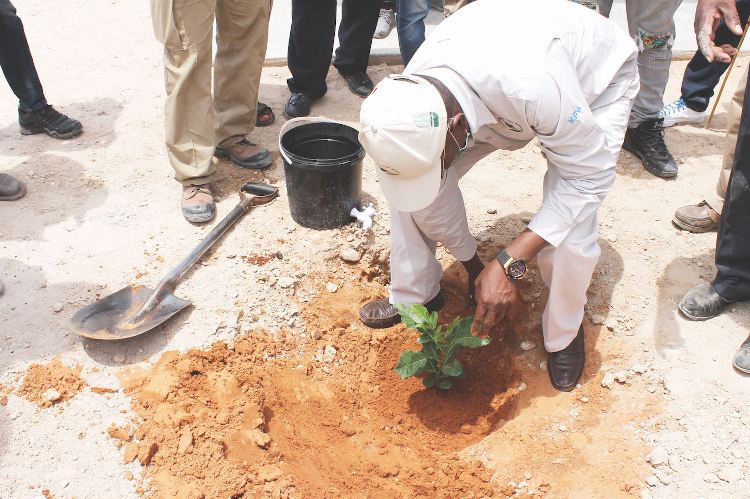FORESTS in Africa, including in Namibia, are shrinking.
This is according to the latest United Nations Food and Agriculture Organisation’s (FAO) report on the State of the World’s Forests.
According to the report, published in December 2020, forests supply water, mitigate climate change and provide habitats for many pollinators, which are essential for sustainable food production.
The sustainable management of forest resources is imperative for the longevity of a healthy ecosystem.
Namibia, through the Ministry of Environment, Forestry and Tourism, has been making efforts in demarcating forest areas in the country to conserve forest cover.
In November last year, the environment ministry and the United Nations Development Programme (UNDP) jointly inaugurated a new community forest and conservancy office at Otjiu-West in the Kunene region, as well as the Oshaampulaa Community Forest in the Oshikoto region.
The dry expanse of the Otjiu-West conservancy was graced with the new facilities in an effort to ensure the sustainable management of Namibia’s forest resources.
At the inaugural event, environment minister Pohamba Shifeta said the two areas join nine others which received assistance from the government through the Sustainable Management of Namibia’s Forested Lands (Namfola) project.
The project has assisted 13 different communities around the country, and is a collaboration of the Namibian government and UNDP, with financial support from the Global Environment Facility (GEF).
“Among the support provided by the project has been the construction of two community forest office facilities for these two community forests . . . to be used by the communities in running their day-to-day activities,” Shifeta said.
He said the establishment of community forests aims to create joint responsibility between the government and communities to preserve and protect forest resources.
The community forests would eventually become self-sustaining entities, Shifeta said.
“Forests are protected by people for their own benefit,” he said.
He said Namibia has thus far proclaimed 43 areas as community forests, all of which continue to be managed as such.
“Although Namibia’s forest cover has declined due to other land uses, more and more areas have been brought under protection through the proclamation of community forests,” the minister said.
According to the FAO report, population pressure and poverty in Africa are the main threats to forest conservation, driving poor farmers to convert forests to cropland and to harvest woodfuel at unsustainable levels.
To counter this, Africa has developed the Sustainable Forest Management Framework for Africa (2020-2030), designed to guide member states of the African Union (AU) and African Regional Economic Communities on forest-related priorities towards achieving the objectives of the AU’s Agenda 2063 and the United Nations’ Agenda 2030.
“The priorities include enhancing the value of forests, markets, processing and trade, capacity development and knowledge management, promoting supportive political and institutional frameworks for sustainable forest management, enhancing the restoration of degraded forests and landscapes, and enhancing partnerships and resource mobilisation,” the report read.
At the forest’s inaugural event, UNDP resident representative Alka Bhatia said the main objective of the project was to alleviate the pressure on forest resources and thus increase the capacity for the uptake of improved agriculture, livestock and forestry management practices in community forest areas.
Bhatia said the Nafola project has assisted the Otjiu-West community with the assessment of marketable forest and non-forest tradable products and other income-generating options, which contribute to efforts in eradicating poverty and hunger.
Stay informed with The Namibian – your source for credible journalism. Get in-depth reporting and opinions for
only N$85 a month. Invest in journalism, invest in democracy –
Subscribe Now!








